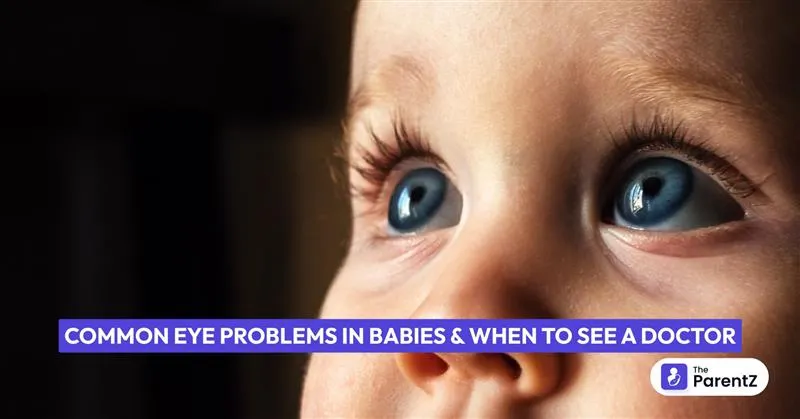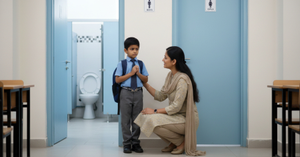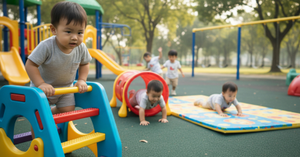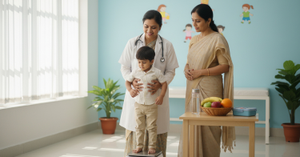Having a new baby brings so much joy, but it also comes with endless questions and worries. One area that often concerns new parents is their baby's eyesight. Those tiny eyes seem so delicate, and it's natural to wonder if everything is developing normally. The good news is that most eye issues in babies are treatable, especially when caught early. Let's walk through everything you need to know about your baby's eye health.
Understanding Your Baby's Vision Development
When your baby first arrives, their vision is quite different from what you might expect. Newborns can only see about 10 inches away from their face, just far enough to focus on your face during feeding time. Their eyes are also very sensitive to bright light, which is completely normal.
In the first month, don't be alarmed if your baby's eyes don't seem perfectly coordinated. They're still learning to work together. By around 3 months, your baby should be able to track moving objects with both eyes. The real magic happens between 5-6 months when depth perception and color vision start improving dramatically.
Warning Signs to Watch For
As your baby grows, keep an eye out for these symptoms that might signal a problem:
- Excessive tearing: While babies cry and produce tears, constant watery eyes, even when they're not crying, could mean a blocked tear duct. This condition, called epiphora, is fairly common and usually treatable.
- Extreme light sensitivity: All babies are sensitive to bright light initially, but if this continues well past the first month or two, it might indicate increased eye pressure that needs attention.
- Eyes that don't align: It's normal for newborn eyes to look crossed occasionally, but if one eye consistently turns inward or outward after the first month, this needs evaluation.
- Trouble tracking objects: After 3 months, both eyes should be able to follow moving objects together. If they can't, there might be a coordination problem.
If you notice any of these signs, don't panic, but do reach out to your pediatrician or ask for a referral to a pediatric eye specialist.
The Most Common Eye Problems in Babies
Blocked Tear Duct
About 20% of babies are born with this condition. The tear duct, which normally drains tears from the eye, hasn't fully opened. This causes watery, sometimes irritated eyes. Your doctor might teach you a gentle massage technique to help open the duct. Most cases resolve on their own by the baby's first birthday, but sometimes a simple procedure is needed.
Lazy Eye (Amblyopia)
This condition occurs when one eye develops less strongly than the other. As a result, the weaker eye may drift either inward or outward. The brain starts favoring the stronger eye, which may lead to permanent eye issues if not treated. Early detection is crucial as the sooner treatment begins, the better the outcome.
Crossed Eyes (Strabismus)
Strabismus is a condition where the eyes are misaligned. While one eye focuses straight ahead, the other may point inward, outward, upward, or downward. This affects about 4% of children. If left untreated, the brain may compensate by disregarding signals from the misaligned eye to prevent seeing double, which can result in amblyopia (lazy eye).
Refractive Errors
These are vision problems caused by the eye's shape affecting how light enters:
- Nearsightedness (Myopia): Distant objects appear blurry
- Farsightedness (Hyperopia): Both near and far objects can appear blurry
- Astigmatism: Vision appears blurry or wavy due to an irregularly shaped eye
Serious Conditions to Know About
- Congenital Cataracts: Some infants are born with cloudiness or opacity in the lens of one or both eyes. Large cataracts can block vision development and may need surgical removal within weeks of birth.
- Congenital Glaucoma: This rare eye disorder causes increased pressure inside the eye due to abnormal development of the eye’s drainage system. Typical signs include enlarged eyes (buphthalmos), excessive tearing (epiphora), sensitivity to light (photophobia), and a cloudy or hazy cornea. Early treatment is important to prevent vision loss.
- Retinopathy of Prematurity (ROP): This affects some premature babies, especially those born very early or with low birth weight. If abnormal blood vessels develop in the retina and the condition is not carefully monitored or treated, it can result in serious vision problems.
When to See a Doctor
Trust your instincts as a parent. If something seems off with your baby's eyes, it's always better to check with a professional. Seek immediate medical attention if you notice any of the following:
- A white reflection in the pupil (instead of the normal red-eye in photos)
- Bulging or swelling around the eyes
- Constant eye rubbing or signs of pain
- Sudden changes in eye appearance
- Signs of infection like discharge, redness, or fever
What You Can Do at Home
- Keep it clean: Gently clean around your baby's eyes with a damp, clean cloth. Use a different part of the cloth for each eye to prevent the spread of any infection.
- Protect from bright light: While some light sensitivity is normal, you can help by keeping bright lights dimmed during the first few weeks.
- Encourage visual development: Hold your baby about 10 inches from your face during feeding and talking. Use high-contrast toys and books to help stimulate vision development.
- Don't ignore the signs: If you notice any of the warning signs mentioned earlier, don't wait to see if they improve on their own.
What NOT to Do
- Don't use home remedies: Avoid putting breast milk, honey, or other substances in your baby's eyes. These can cause infections.
- Don't assume they'll outgrow it: While some eye coordination issues resolve naturally in the first few months, persistent problems need professional evaluation.
- Don't delay treatment: The earlier eye problems are caught and treated, the better the outcome for your baby's vision.
Conclusion
Most babies develop normal, healthy vision without any problems. However, early detection and treatment of eye issues can prevent lifelong vision problems. Regular check-ups with your pediatrician include basic eye examinations, and they'll refer you to a specialist if needed.
Remember, you know your baby best. If you're concerned about their eye health, don't hesitate to speak up. Your baby's vision is developing rapidly in those first few months and years, and getting any problems addressed early gives them the best chance for clear, healthy eyesight throughout their life.
The key is staying informed, watching for warning signs and maintaining regular medical care. With proper attention and care, most eye problems in babies can be successfully treated, giving your baby the clear vision they need to explore and learn about their amazing new world.








Be the first one to comment on this story.